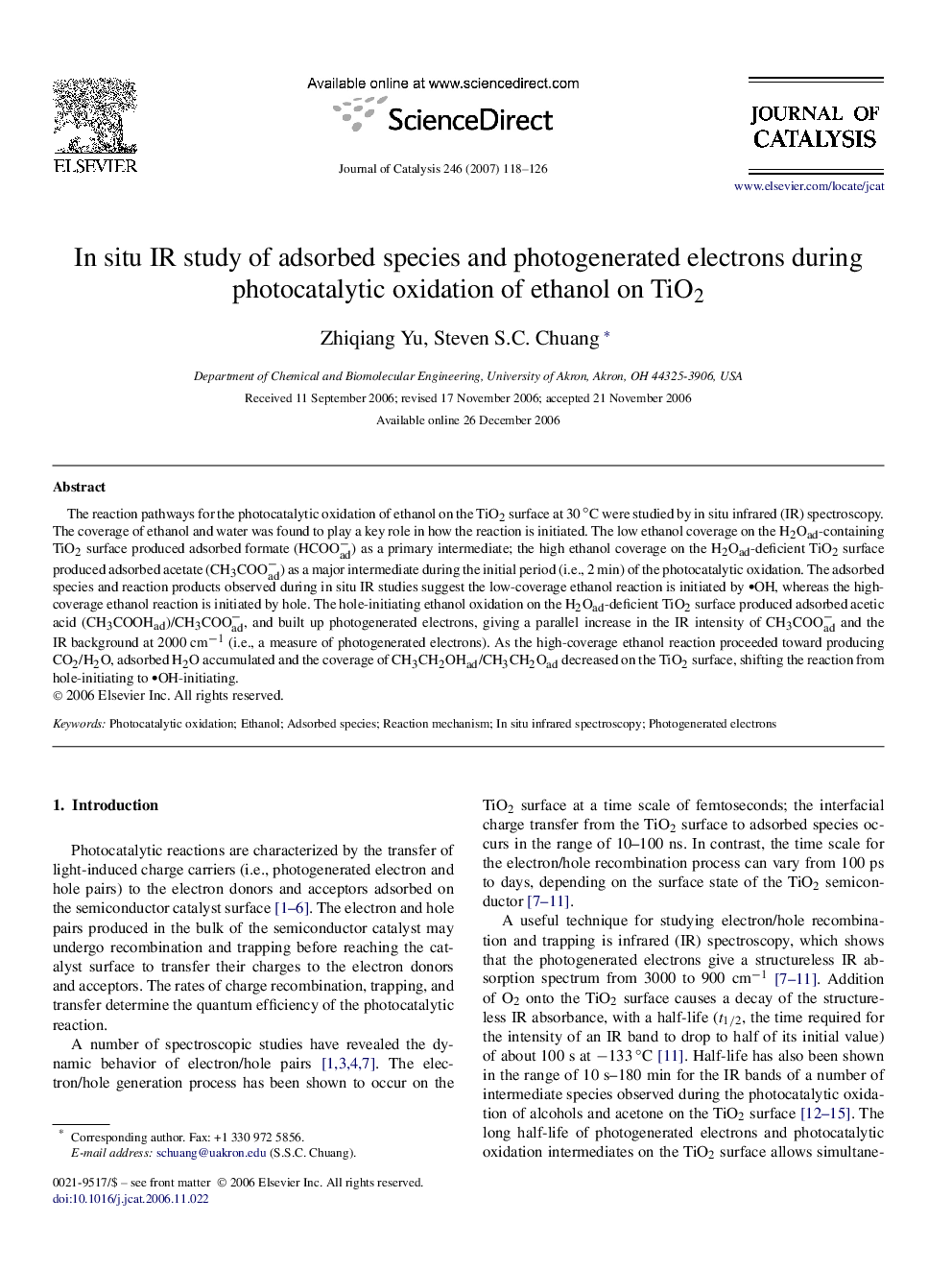| Article ID | Journal | Published Year | Pages | File Type |
|---|---|---|---|---|
| 62907 | Journal of Catalysis | 2007 | 9 Pages |
The reaction pathways for the photocatalytic oxidation of ethanol on the TiO2 surface at 30 °C were studied by in situ infrared (IR) spectroscopy. The coverage of ethanol and water was found to play a key role in how the reaction is initiated. The low ethanol coverage on the H2Oad-containing TiO2 surface produced adsorbed formate (HCOO−ad) as a primary intermediate; the high ethanol coverage on the H2Oad-deficient TiO2 surface produced adsorbed acetate (CH3COO−ad) as a major intermediate during the initial period (i.e., 2 min) of the photocatalytic oxidation. The adsorbed species and reaction products observed during in situ IR studies suggest the low-coverage ethanol reaction is initiated by •OH, whereas the high-coverage ethanol reaction is initiated by hole. The hole-initiating ethanol oxidation on the H2Oad-deficient TiO2 surface produced adsorbed acetic acid (CH3COOHad)/CH3COO−ad, and built up photogenerated electrons, giving a parallel increase in the IR intensity of CH3COO−ad and the IR background at 2000 cm−1 (i.e., a measure of photogenerated electrons). As the high-coverage ethanol reaction proceeded toward producing CO2/H2O, adsorbed H2O accumulated and the coverage of CH3CH2OHad/CH3CH2Oad decreased on the TiO2 surface, shifting the reaction from hole-initiating to •OH-initiating.
